Greenhouse farming is growing crops in an enclosed structure that allows for controlled environmental conditions. Greenhouse farming aims to create the ideal environment for plant growth, which can result in higher yields and better-quality produce.
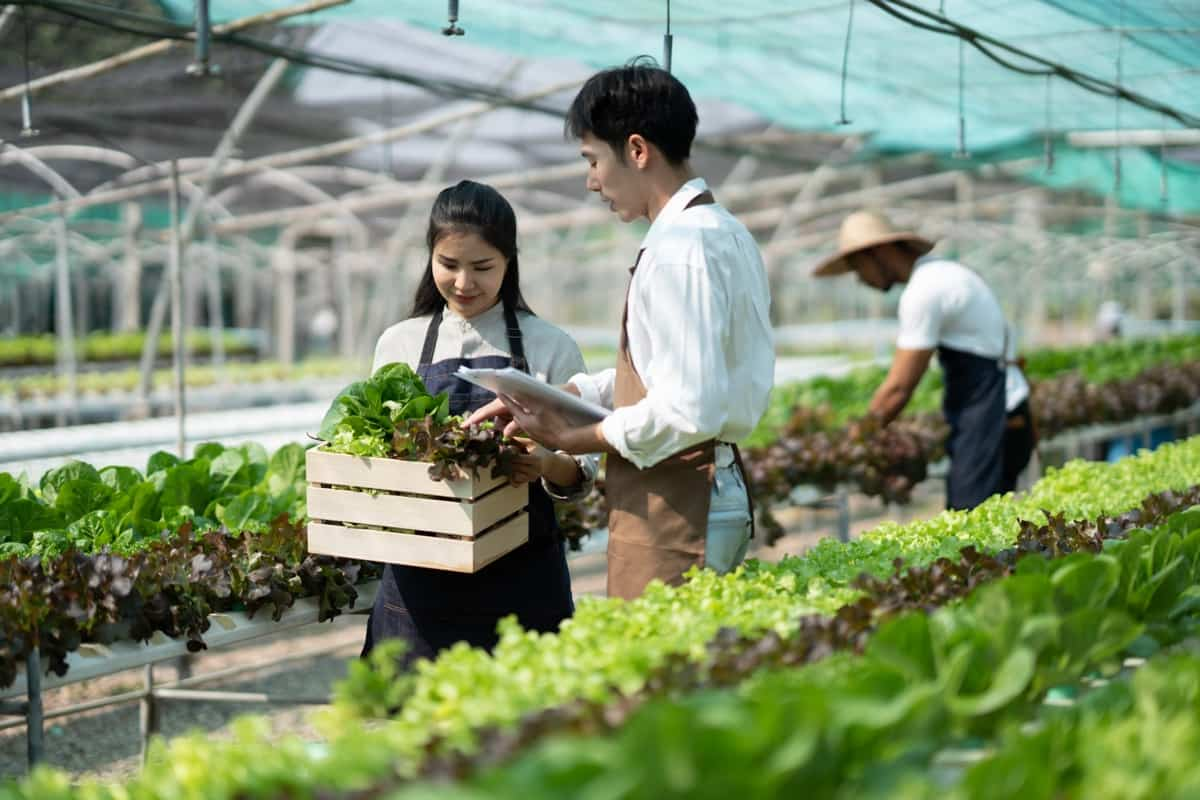
Greenhouse Farming in Italy
What is Greenhouse Farming?
Greenhouse farming is a modern technique used to cultivate crops in controlled environments, minimizing the effect of external factors such as weather changes and pests. This practice has gained popularity in Italy due to its efficiency and ability to produce high-quality crops year-round. Greenhouses come in various sizes, shapes, and designs depending on the type of crop being grown and the farmer’s specific needs. They are made of glass or plastic walls with roofs that let sunlight through while keeping heat inside.
Greenhouse farming has become increasingly popular due to its efficiency and effectiveness in producing high-quality crops while minimizing negative environmental impacts such as water waste, chemical runoff, soil erosion, etc. The greenhouse’s roof and walls trap the sun’s heat, creating a warmer atmosphere than outside. Additionally, irrigation systems deliver water directly to the plant’s roots in precise amounts while minimizing waste.
The Different Types of Greenhouse Farms in Italy
- Traditional greenhouses are the most common type of greenhouse in Italy. Traditional greenhouses are perfect for growing vegetables such as Tomatoes, Cucumbers, and Peppers.
- Shade houses provide partial shading, which helps to protect plants from intense sunlight without reducing light levels too much. This makes them ideal for growing flowers or delicate crops like lettuce.
- The next type of greenhouse farm is the vertical farming system. This system involves stacking layers vertically to maximize space usage while reducing the environmental impact on land use, water consumption, energy consumption, etc.
- Net houses protect against insects but allow air circulation through their mesh-like structure. Net houses are perfect for growing strawberries or other fruit crops that require bee pollination.
Greenhouse Farming Places in Italy
Greenhouse farming is a popular agricultural practice in Italy, and there are several regions where it is particularly prevalent. One of these areas is the Po Valley in northern Italy, which has a favorable climate for greenhouse agriculture due to its mild winters and warm summers. Another popular greenhouse-farming region in Italy is Sicily, an island off the southern coast. The island’s Mediterranean climate provides ideal conditions for growing crops such as tomatoes, peppers, and eggplants undercover.
In case you missed it: How to Stake Your Tomato Plants: With Simple Steps, Step-By-Step Process, Methods, and Different Ways
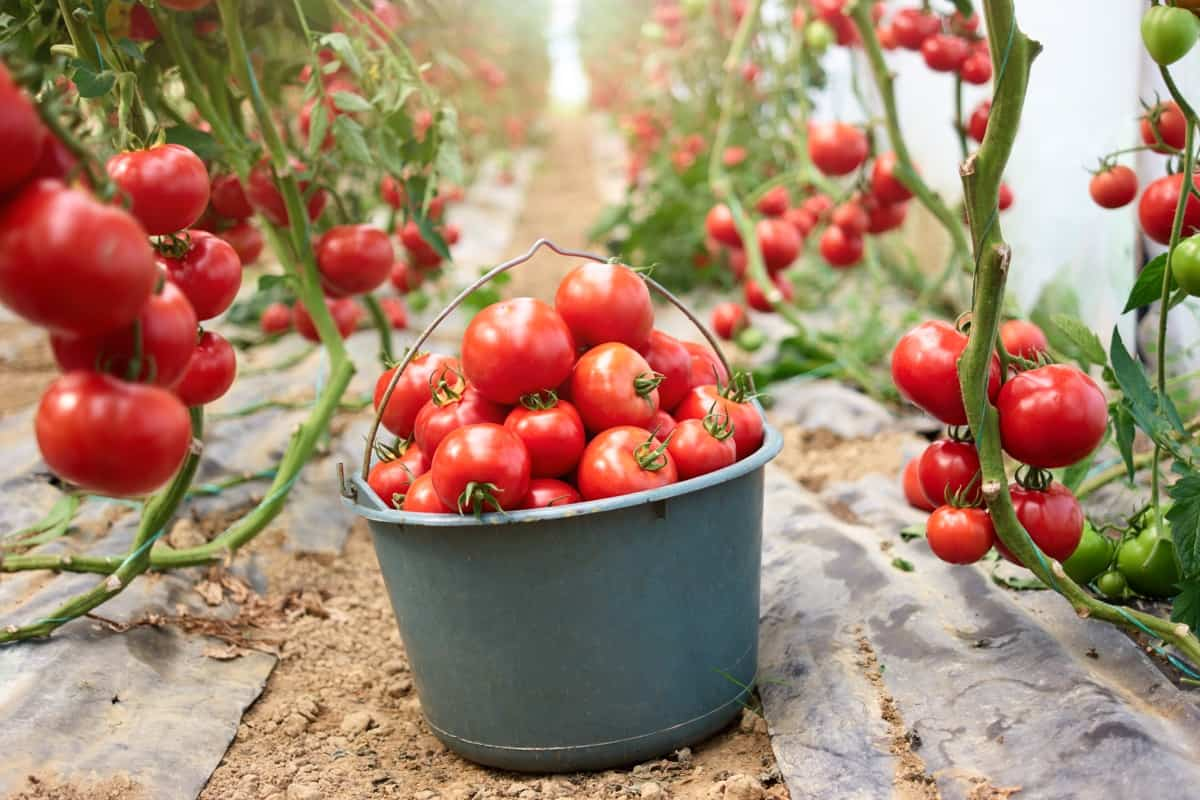
In addition to the Po Valley and Sicily, other regions of Italy known for their greenhouse production include Emilia-Romagna, Veneto, Lombardy, Tuscany, and Puglia. Many farmers have also started small-scale greenhouses on rooftops or balconies in urban areas. These rooftop greenhouses provide fresh produce and help combat air pollution by improving air quality. There are plenty of places throughout Italy where successful greenhouse farms produce high-quality crops year-round.
What Crops Are Grown in Greenhouses in Italy?
Greenhouse farming in Italy is a profitable business venture that has gained considerable attention over the years. Greenhouses are used to grow various crops, from vegetables and fruits to flowers and herbs. Greenhouses allow farmers to create an optimal growing environment for their crops, which results in higher yields and better-quality produce. In Italy, some of the most popular greenhouse-grown crops include Tomatoes, Cucumbers, Peppers, Eggplants, Lettuce, Strawberries, and herbs such as Basil or Oregano.
The Cost of 1 Acre Greenhouse Farm in Italy
The cost of a greenhouse is one of the primary factors to consider when starting a greenhouse farming venture in Italy. The setup cost can change depending on various factors such as size, location, and construction materials. For instance, the cost could range from €30,000 to €100,000 for an acre-sized greenhouse farm in Italy. This includes expenses like land purchase/lease agreements; construction materials; irrigation systems; fertilizers; heating/cooling systems; lighting fixtures, etc.
Greenhouse Vegetable Production in Italy
Greenhouse vegetable production is a significant aspect of agriculture in Italy. Tomatoes, peppers, cucumbers, and eggplants are the most common vegetables grown in greenhouses nationwide. The Italian government has been encouraging greenhouse vegetable production as it helps to meet the increasing demand for fresh produce and reduces imports. Greenhouse technology also allows year-round cultivation of vegetables in regions with extreme weather patterns or limited arable land. Therefore, farmers who opt for greenhouse farming can avoid seasonal fluctuations and supply consistent quantities throughout the year.
In case you missed it: Management of Black Thrips in Chilli Peppers: Symptoms, Treatment, Chemical, Biological, Natural, and Organic Control
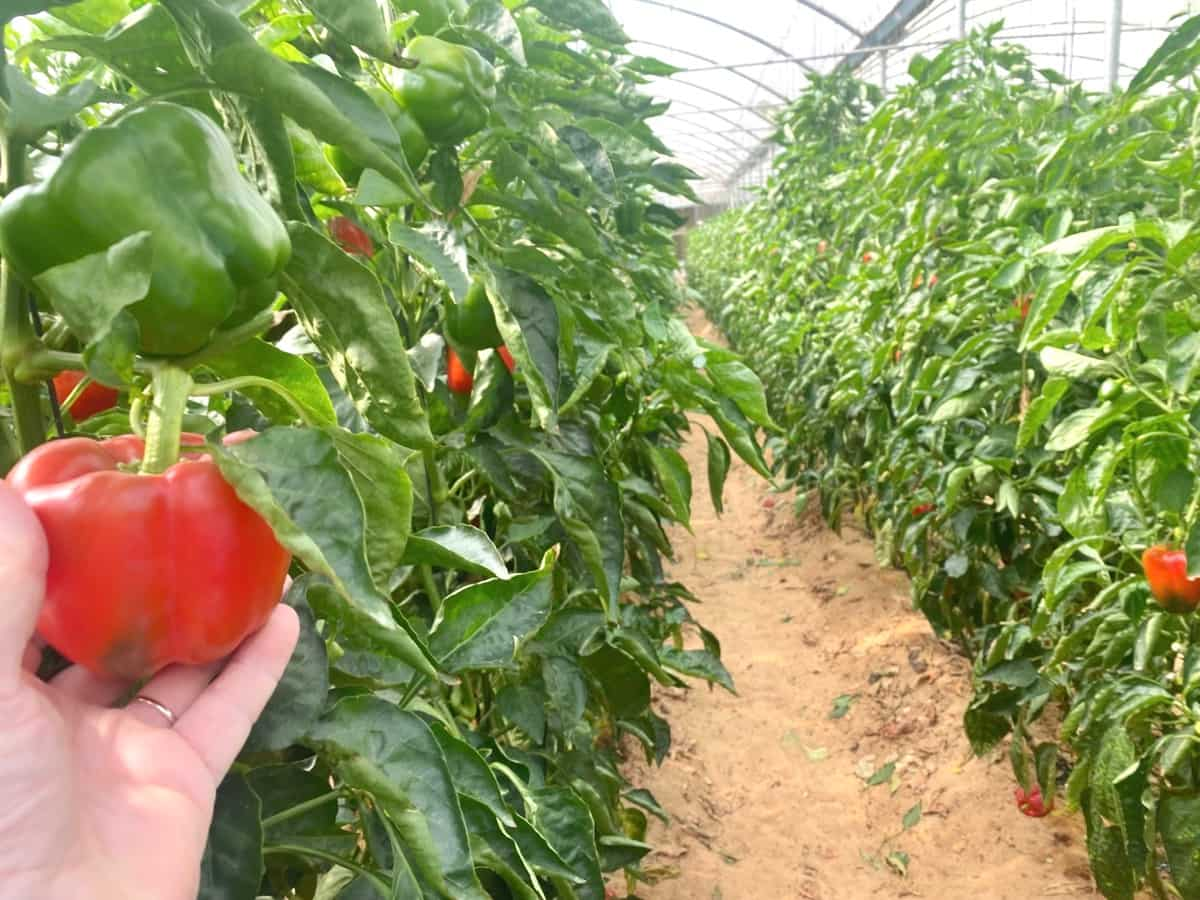
Is Greenhouse Farming Profitable in Italy
Greenhouse farming in Italy is profitable, especially for those looking to invest in agriculture. Additionally, greenhouse farming allows for more control over growing conditions like temperature, humidity, and light exposure. Greenhouses also require less water than open-field cultivation since they can retain moisture within the structure. This helps save on water costs and makes it easier for growers to manage their crops during drought.
How Does Greenhouse Farming Work in Italy?
It is a type of agriculture that involves growing crops in an enclosed structure made of transparent material. The greenhouse traps sunlight and heat, creating a controlled environment for the plants to thrive. Greenhouses work by allowing sunlight into the structure while trapping heat inside. This creates a warm and humid environment that is ideal for growing plants.
The transparent walls allow light to pass through, providing photosynthesis energy, while the roof prevents heat from escaping. Most greenhouses have heating and cooling systems that help regulate temperature and humidity levels. These systems ensure that the plants have optimal conditions for growth all year round. One important aspect of greenhouse farming is irrigation.
Since there is no natural rainfall inside the structure, water must be supplied manually through drip or sprinkler systems. Nutrients are added to the water supply to provide essential elements for plant growth. Another key element of greenhouse farming is pest management. Since pests can easily infiltrate enclosed structures like greenhouses, farmers use various methods, such as biological controls or pesticides, to keep them at bay.
Steps to Create a Greenhouse Business Plan in Italy
- Identify your niche and research the market demand for your product.
- Determine the size and location of your greenhouse, considering factors such as climate, soil quality, and accessibility. Building a greenhouse structure that can withstand harsh weather conditions should be considered. It must provide sufficient ventilation, heating/cooling systems, and irrigation mechanisms.
- Selecting an appropriate site is essential. The plot of land must have access to adequate sunlight and water sources while also being easily accessible for transportation purposes.
- Develop a detailed list of equipment needed for cultivation, irrigation, ventilation, heating/cooling systems, etc., along with their costs.
- Identify your target market and research their needs and preferences. This will help you tailor your crop selection and marketing strategies accordingly.
- Another important aspect of creating a successful greenhouse farm involves sourcing quality seeds or seedlings from reputable suppliers with proven track records of producing high-quality crops.
- Developing efficient pest control strategies will keep diseases and pests at bay without compromising crop quality and yield potential.
- In addition to financial considerations, you should factor in any regulatory requirements for operating a greenhouse farm in Italy. These may include obtaining permits or licenses from local authorities and complying with environmental regulations.
- Consider hiring an experienced consultant who can offer valuable advice on running a successful greenhouse operation. Employ an experienced team that can handle all aspects of greenhouse operation, including planting, harvesting, maintenance work like pruning plants when needed, etc.
- Create marketing strategies to reach potential customers through advertising campaigns in both online/offline channels.
In case you missed it: Hybrid Chilli Yield Red and Green Per Acre in India
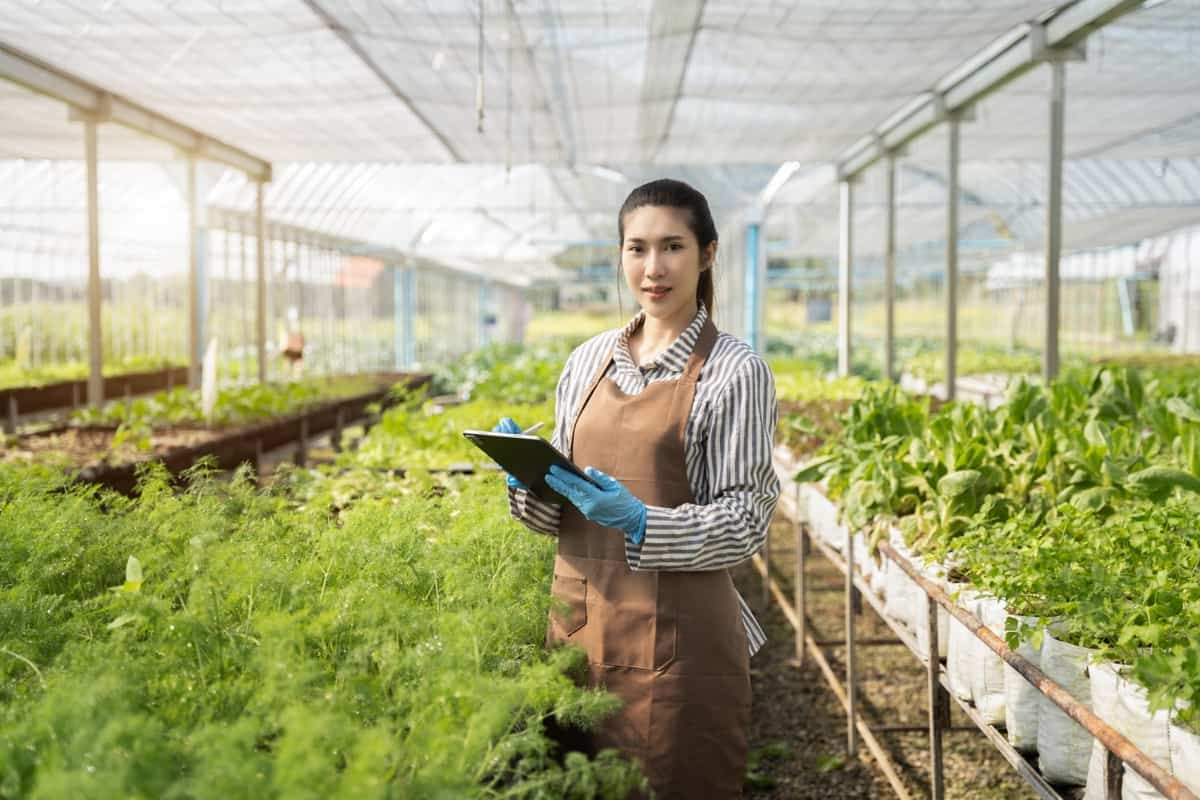
Subsidies and Loans for Greenhouse Farmers in Italy
The Italian government offers various subsidies to support agricultural activities in the country. These subsidies include grants for investments in greenhouses and other agricultural infrastructures. The subsidy varies depending on the type of investment made. In addition to subsidies, banks, and other financial institutions offer loans specifically designed for greenhouse farming. These loans have lower interest rates than regular business loans since they are aimed at supporting agriculture.
There are European Union funds available for greenhouse farming projects. One such fund is EAFRD (European Agricultural Fund for Rural Development), which aims to promote economic growth in rural areas through investments in agriculture-related industries like greenhouses. These subsidies and loans enable farmers to invest in modern technologies like greenhouses that enhance crop quality while increasing yields.
Greenhouse Farming in Italy in the Future
Greenhouse farming is rapidly gaining popularity as an innovative and sustainable method of agriculture. Greenhouses are not affected by adverse weather conditions such as droughts or floods, which can negatively affect traditional crop yields. Additionally, they provide a controlled environment where plants can thrive throughout the year regardless of seasonal changes.
Greenhouses also consume less water than open-field cultivation since they retain moisture within their structure. Future technological developments will enable more efficient use of resources such as energy and water through greenhouse automation systems. Advancements like these will reduce operational costs while promoting sustainability.
Moreover, with more research into plant genetics and biotechnology, we may see genetically modified crops being grown on a larger scale in greenhouses to improve yields further. Innovations like vertical farms with multiple levels could increase agricultural output per unit area. Greenhouse farming presents endless opportunities for growth and innovation toward sustainable food security – thus making it integral to our future agricultural landscape.
In case you missed it: Best Regenerative Agriculture Practices Every Grower Should Follow and Why It Is Important

Key Rules for Greenhouse Farming in Italy
- The most important rule is ensuring adequate ventilation within the greenhouse. This can be achieved through vents or fans and helps prevent common issues such as fungal growth and excess heat.
- Another important rule is maintaining proper temperature control throughout the growing season. In Italy, this means monitoring daytime and nighttime temperatures, especially during colder months when freezing occurs.
- Additionally, growers should pay close attention to irrigation needs within their greenhouses. Proper watering techniques will depend on crop type and environmental conditions but may include drip irrigation or misting systems.
- It’s also essential for Italian greenhouse farmers to practice good pest management techniques. This includes regularly scouting plants for signs of pests or disease, implementing preventative measures like screening windows and doors to keep out insects, and using natural pest control methods whenever possible.
- Maintaining proper temperature control is essential. Greenhouses require different temperatures depending on the type of crop being grown. Maintaining optimal conditions can help with crop growth and yield.
- Water management is crucial for successful greenhouse farming in Italy. Watering must be done properly, considering the plant’s specific needs while preventing over- or under-watering, which could damage or stunt growth.
- Italian greenhouse growers must adhere to all government regulations regarding pesticide use and waste disposal. These rules help ensure consumer safety while protecting the environment from harmful pollutants commonly used in agriculture.
Challenges of Greenhouse Farming in Italy
Greenhouse farming in Italy is not without its challenges. One of the biggest obstacles facing greenhouse farmers in Italy is the high cost of energy. Greenhouses require a lot of energy to maintain the ideal temperature and humidity levels for optimal plant growth, which can be expensive.
Pests and diseases are also a major concern for greenhouse farmers in Italy. Greenhouses’ warm and humid environment provides an ideal breeding ground for pests such as aphids, whiteflies, and spider mites, which can quickly spread throughout the crop if not managed properly. Transportation costs are another issue that affects greenhouse farming operations in Italy since most greenhouses are located outside urban areas where land is cheaper, but transportation becomes costly due to longer distances from markets or ports.
In case you missed it: Glasshouse Farming: For Increased Yields and Reduced Pesticide Use
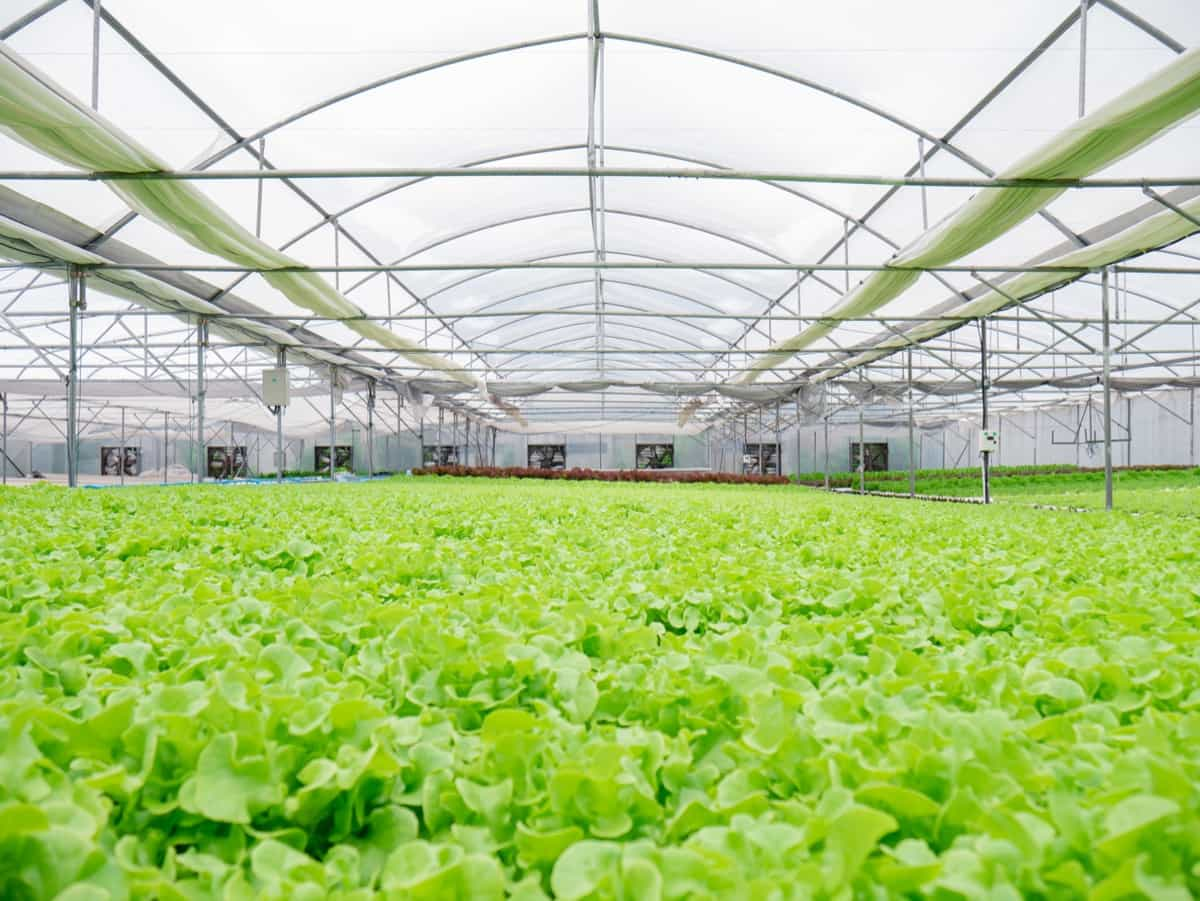
Greenhouse farming offers many opportunities for growth within agriculture while also contributing positively toward environmental sustainability. As Italy continues to focus on developing more environmentally friendly practices throughout their industries – including agriculture – we can hope that they will continue to lead by example with their commitment towards innovation in sustainable food production.
Conclusion
Greenhouse farming uses artificial conditions to grow plants. Greenhouse farming is a method of controlled environment agriculture that involves growing crops inside enclosed structures, such as glass or plastic greenhouses. This technique enables farmers to regulate temperature, humidity, and light exposure for optimal plant growth.
- Economical Aquaculture: A Guide to Low-Budget Fish Farming
- 15 Common Planting Errors That Can Doom Your Fruit Trees
- How to Make Houseplants Bushy: Effective Tips and Ideas
- Innovative Strategies for Boosting Coconut Pollination and Yield
- Pollination Strategies for Maximum Pumpkin Yield
- The Complete Guide to Chicken Fattening: Strategies for Maximum Growth
- Natural Solutions for Tulip Problems: 100% Effective Remedies for Leaf and Bulb-Related Issues
- Revolutionizing Citrus Preservation: Towards a Healthier, Greener Future
- Natural Solutions for Peony Leaf and Flower Problems: 100% Effective Remedies
- Maximizing Profits with Avocado Contract Farming in India: A Comprehensive Guide
- Natural Solutions for Hydrangea Problems: 100% Effective Remedies for Leaf and Flowers
- The Ultimate Guide to Choosing the Perfect Foliage Friend: Bringing Life Indoors
- From Sunlight to Sustainability: 15 Ways to Use Solar Technology in Agriculture
- The Ultimate Guide to Dong Tao Chicken: Exploring from History to Raising
- The Eco-Friendly Makeover: How to Convert Your Unused Swimming Pool into a Fish Pond
- Mastering the Art of Delaware Chicken Farming: Essentials for Healthy Backyard Flocks
- 20 Best Homemade Fertilizers for Money Plant: DIY Recipes and Application Methods
- How to Craft a Comprehensive Free-Range Chicken Farming Business Plan
- Brighten Your Flock: Raising Easter Egger Chickens for Beauty and Bounty
- How to Optimize Your Poultry Egg Farm Business Plan with These Strategies
- Subsidy for Spirulina Cultivation: How Indian Government Schemes Encouraging Spirulina Farmers
- Ultimate Guide to Raising Dominique Chickens: Breeding, Feeding, Egg-Production, and Care
- Mastering the Art of Raising Jersey Giant Chickens: Care, Feeding, and More
- Ultimate Guide to Raising Legbar Chickens: Breeding, Farming Practices, Diet, Egg-Production
- How to Raise Welsummer Chickens: A Comprehensive Guide for Beginners
- How to Protect Indoor Plants in Winter: A Comprehensive Guide
- Ultimate Guide to Grow Bag Gardening: Tips, Tricks, and Planting Ideas for Urban Gardeners
- Guide to Lotus Cultivation: How to Propagate, Plant, Grow, Care, Cost, and Profit
- Agriculture Drone Subsidy Scheme: Government Kisan Subsidy, License, and How to Apply Online
- Ultimate Guide to Raising Araucana Chickens: Breed Profile, Farming Economics, Diet, and Care
- Bringing Hydroponics to Classroom: Importance, Benefits of Learning for School Students
- Ultimate Guide to Raising Polish Chickens: Breed Profile, Farming Economics, Diet, and Care
- Ultimate Guide to Raising Australorp Chickens: Profile, Farming Economics, Egg Production, Diet, and Care
- Silkie Chicken Farming: Raising Practices, Varieties, Egg Production, Diet, and Care
- Sussex Chicken Farming: Raising Practices, Varieties, Egg Production, Diet and Care
- Homemade Feed Formulations for Livestock: Discover Cost-effective Starter to Finisher Feed Recipes